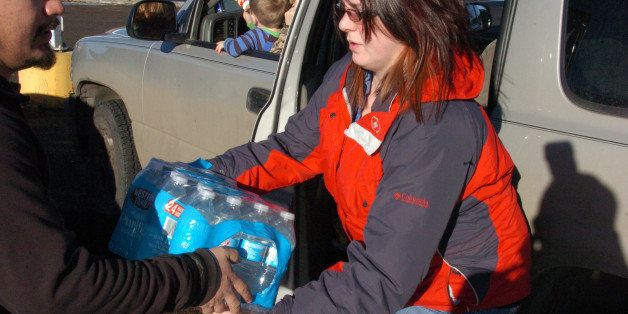
By Laura Zuckerman
Jan 22 (Reuters) - A Montana town's water supply, contaminated by oil from a breached pipeline over the weekend, may be safe for drinking again by Friday, state officials said, after tests showed a drop in concentrations of a cancer-causing petrochemical.
The contamination is linked to last Saturday's spill into the Yellowstone River of an estimated 1,200 barrels of crude oil from a pipeline that ruptured several miles upstream of Glendive, in northeastern Montana.
Drinking water to some 6,000 people in and around Glendive was found earlier this week to contain benzene, an organic compound in oil and gas, at levels above what is deemed acceptable by the U.S. Environmental Protection Agency.
The so-called Poplar pipeline carries 42,000 barrels of crude a day gathered from producers in eastern Montana and North Dakota. It is unclear what caused the pipeline to break.
Responders have so far recovered about 246 barrels of petroleum from the breached pipeline but cleanup efforts in the river have been hampered by the pooling of oil below thick layers of ice.
Bridger Pipeline LLC, the oil company behind the pipeline, said field tests of water sampled from the Glendive treatment plant and from fire hydrants in the city showed benzene levels had dropped to levels considered safe, but results must be formally confirmed by an independent laboratory.
Meanwhile, Montana environmental officials said on Thursday that tap water could be cleared for drinking and cooking again as early as Friday after test results confirm that it is fit for human consumption.
Glendive water users were to be instructed Thursday evening on how to flush their taps of residual contamination in water lines, Bridger spokesman Bill Salvin said.
The company has trucked tens of thousands of gallons of bottled water to the city after water sampling earlier this week showed elevated levels of benzene.
Studies show rates of leukemia are higher in people chronically exposed to elevated levels of benzene, according to the American Cancer Society.
Salvin said the oil company is prepared to continue to distribute bottled water to residents if necessary.
About 125 people are involved in the cleanup operation, including contractors hired by Bridger and state and federal environmental and pipeline safety officials. (Reporting by Laura Zuckerman in Salmon, Idaho; Additional reporting by Samantha Sunne in New York; Editing by Eric M. Johnson)

